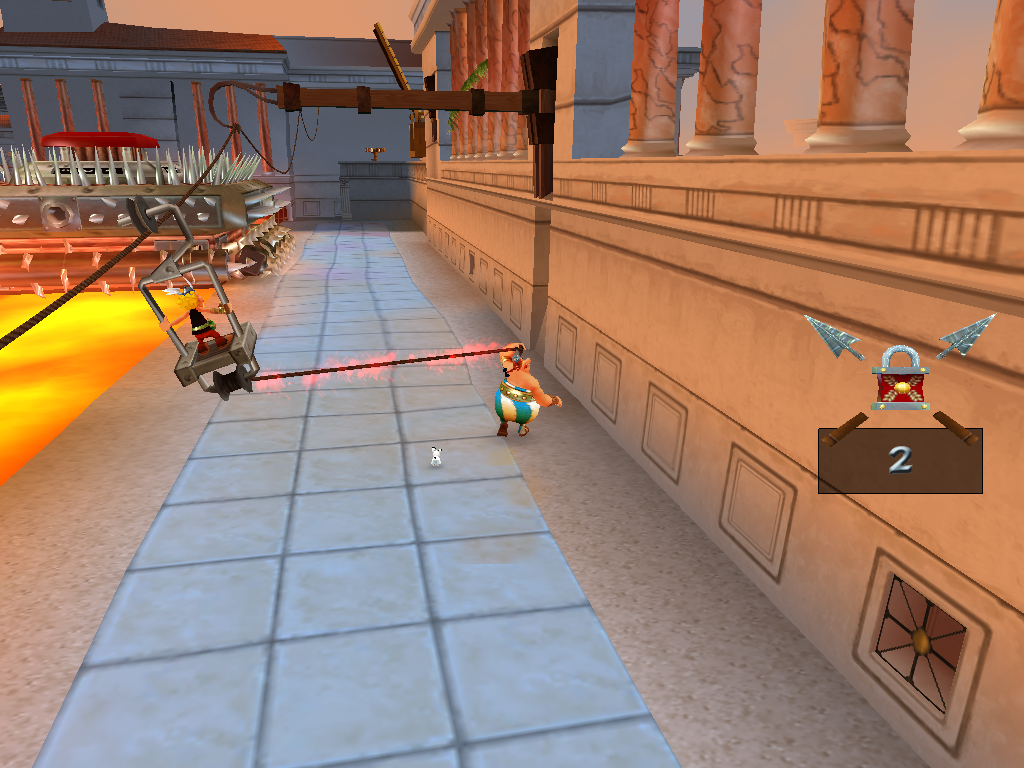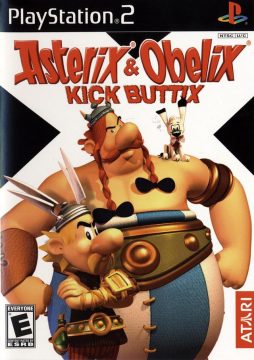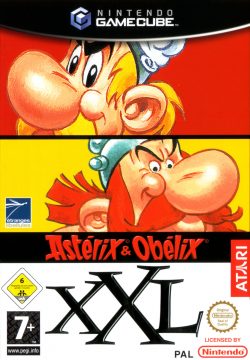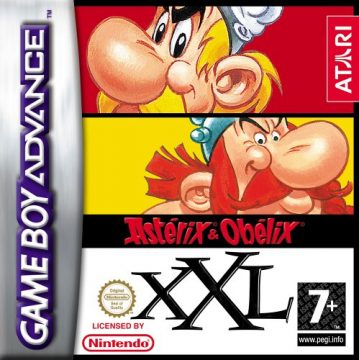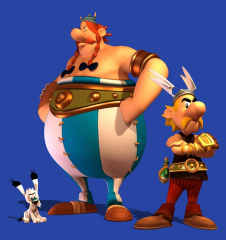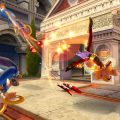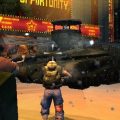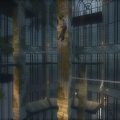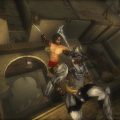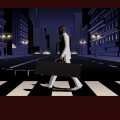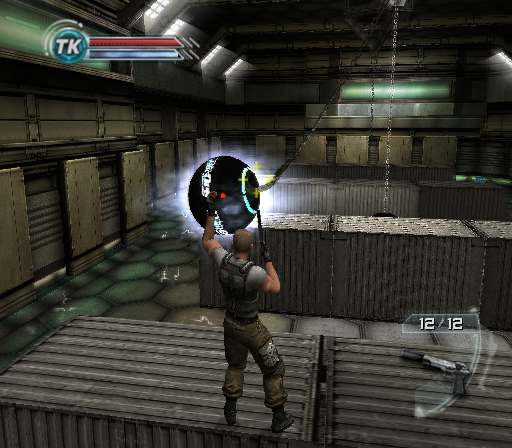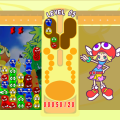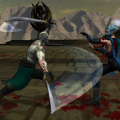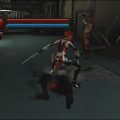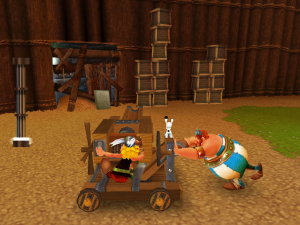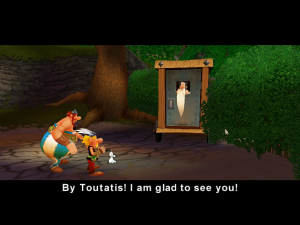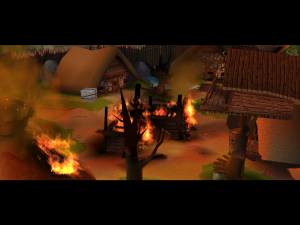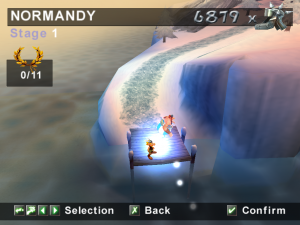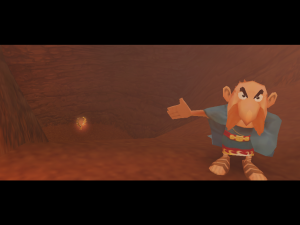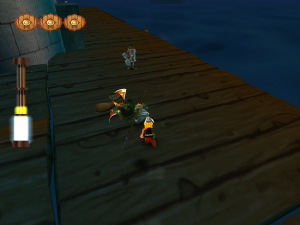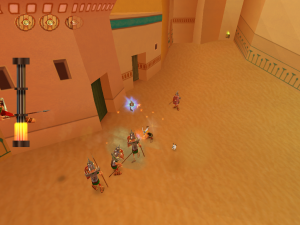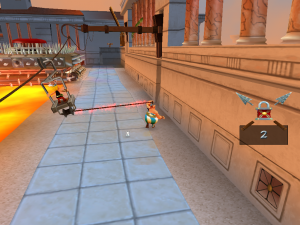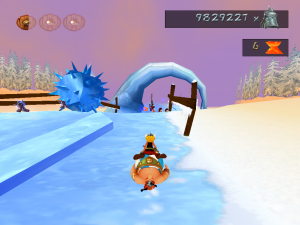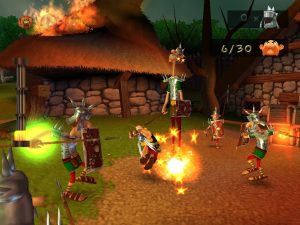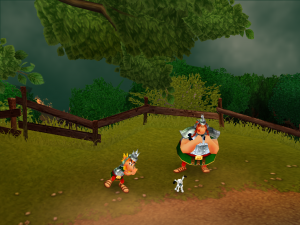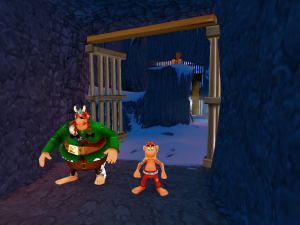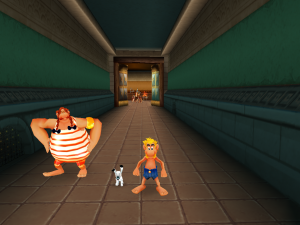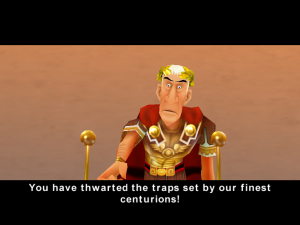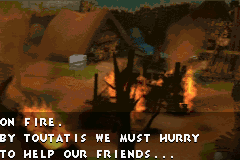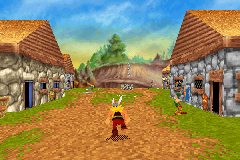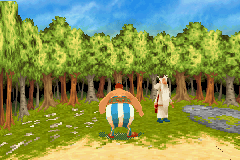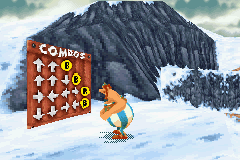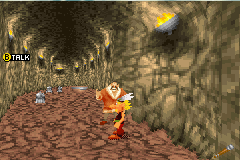Though Astérix had seen a successful mainstream relaunch through the release of the live action movie and coupled with a few above average video games, it would take a few years after the release of Maxi-Delerium for Infogrames to continue to ride the wave of the re-ignited popularity. Infogrames was in the midst of making changes, and to fully make sense of all these changes, one has to go back to 1996. Bruno Bonnell, one of the founders, made the decision to make Infogrames the biggest video game publisher in the world. What followed was a series of acquisitions in a pace and number never seen before. From 1996 to 2001, the following studios and publishers were acquired: Ocean Software, Philips Media BV, OziSoft, ABS Multimedia, Arcadia, Swiss Gamecity GmbH, Gremlin Interactive, Accolade, Beam Software, GT Interactive, Humongous Entertainment, Legend Entertainment, Reflections Interactive, Paradigm Entertainment, Den-o-Tech Int, Hasbro Interactive, Eden Games, Shiny Entertainment
The total price for this seven year long takeover series amounted to a total over $500 million. So intense was the spending that in the time between 1999 to 2001, the company’s debt was raised from $55 million to $493 million though through the amount of releases they were now able to make, their profit also saw a raise from $246 million to $650 million during the same timeframe.
It was the acquisition of Hasbro Interactive that would prove to have the most impact on the company. Along with Hasbro’s rights to Dungeons and Dragons, Mr. Potato Head, My Little Pony and the Game.com hardware, Infogrames also held the rights to a legendary name in video game history, Atari Inc.. In 2001, Bruno Bonnell decided to reorganize the entire company operation and rename all studios to use the name Atari. Infogrames Interactive. became Atari Interactive, Infogrames Australia became Atari Australia, Infogrames Melbourne House became Atari Melbourne House and Infogrames UK became Atari UK.
This relaunch would have a strikingly negative impact on the longtime French publisher and developer. Despite the initial financial boost, things quickly cooled down and their debt would become an issue leading to a number of sales to make ends meet. By 2006, the company could report a loss of $500 million since 1999. This would all lead to Bruno Bonnell leaving the company in 2007 after serving as chairman since 1983.
However, not all was doom and gloom during this time of acquisitions and loss of Roman proportions. In 2004, Astérix finally returned in an all new multiplatform adventure after a 3 year hiatus.
Étranges Libellules was a rather unproven developer from France who’s only prior title was 2001’s video game adaptation of Kirikou, a renowned French animated movie based on African folk tales. While the game didn’t exactly turn the world upside down, they were nevertheless trusted with handling the biggest French property, Astérix. The result was an all new exclusive adventure for near all major systems at the time, with the exception of Xbox.
While out in the forest hunting for wild boars, the skies turn dark and alert Astérix that something foul is afoot. Upon returning to the village he finds his home torched in flames and his fellow villages are nowhere to be found. As he runs down the trail to investigate, he is greeted by a mysterious man who shares information of what has just happened. It turns out this man is a defected Roman spy who decided to go against César once his services were no longer needed. While Astérix and Obélix were out hunting, the village was struck by Roman soldiers led by César himself and ordered the captured Gauls to be sent to different locations around the world. The map showing these locations is broken apart but the captured Gauls managed to snag a piece each before being taken away. Panoramix the druid is locked up right outside the village and after rescuing him, Astérix and Obélix receive the first piece of the map and begin their journey to save all the other Gauls scattered around the Roman Empire.
In contrast of the comic books and cartoons, this game features darker overtones than what you would usually expect from Astérix, with a general grim color scheme being used throughout the game. The characters are also a tad bit more sinister than what you would regularly expect from the famous series. Even our heroes have undergone some changes, being given the American Kirby treatment.
While Astérix retains his usual quick wits, there are some changes made to the characterizations. Obélix appears much less bumbling and both heroes have a strikingly more aggressive nature to them through the cutscenes. In the context of the story it does make sense seeing that their friends have not only been kidnapped but their home burned to the ground, but it’s still a quite different take presented here aimed at the new and younger audience, who have now grown up with more shades of gray to their heroes. The Romans come off as more sinister than before, especially César himself, and the machinery used by them is also quite brutal in their appearance, with blades and firepower unlike that found in the albums and movies.
The goal is to travel the Roman Empire and rescue all the villagers from captivity. Players take control of either Astérix or Obélix through large 3D levels riddled with puzzles, Roman squadrons, environmental hazards and mazes. The players switch control of the duo during certain points in the stages, or if Astérix is stuck in a certain situation, though the default character is Astérix. The majority of bosses and puzzles rely on this co-op style of gameplay and often the key to progress to the next area. This can be everything from Obélix pushing large machinery to Astérix sliding down the snowy mountains in what might possibly be the most suggestive scene in video game history. A lot of the puzzles also revolve around Astérix using torches to light fires, much like one does in the dungeons of the Zelda games. While fighting Romans, the other character is controlled by the CPU and you can command him to attack the nearest enemy by pushing the assigned button. Idéfix also joins in the battles and can be used to stun enemies carrying weapons or shields by pushing his assigned button as well, similar to what is found in Sega’s Shadow Dancer. There are small differences between the two playable characters – Astérix can pick up magic potions and be invincible for a few seconds while Obélix has greater defense and constant super strength. Astérix must have a potion in order to break iron crates, something Obélix does not. Despite the reliance on co-op gameplay, the game only allows for a single player.
Within this fighting system lies a very detailed combo system. The gauge on the right side of the HUD is the combo meter, which fills itself up by you rapidly beating Romans left and right. Once this meter is filled up it displays the word COMBO and allows you to input a command to unleash a super attack for some devastating melee action. A number of combo moves can be bought by visiting the Pedlar found across the different stages.
The stages are filled with secrets scattered around. Each area has a specified amount of laurels which can be collected to unlock a new costume, one per section. You’ll also find trails of Roman helmets and multipliers which is used as currency. After saving up enough helmets, you can either visit the Pedlar to buy some new combos and upgrades or unlock pictures in the gallery section on the map. There are a total of 40 stages, with them being often long trenches of 4-5 stages connected by checkpoints, ultimately making it a rather large game. In order to save, you need to find the sleeping druid and slap him silly in order to wake him up and save your progress.
Perhaps this is what hurts the game the most in the end as well. Apart from the first stage, set in the Gaul forest and village which looks quite nice with good detail to make the village look authentic and the forest having some nice textures, the rest of the game looks awfully bland if not completely unimaginative. Once you reach the second section of the map, Normandy, the level design and overall looks become very one dimensional. Large fields of plain white, white blue or caves of darker blue textures fills the screen but fails to create any diversity. The level design also feels restricted in a way more fitting of a N64 or PSX game, with huge barriers restraining you into a too linear play field mixed with a few open fields that allows for battles with enemies. The game simply tries to be bigger than it is and ends up exposing its own weaknesses almost pervertedly.
The combo system also falls short quite quickly. While initially it seems to be a rather robust series of moves and a fun addition to the brawling, you forget about them as soon as you buy them with the button combinations being confusing in the heat of the battle and worse yet, when actually performed they seem largely ineffective compared to just grabbing and smacking Romans around with your standard moves. It would have been better if it was simply a 2-button system that you would have to push simultaneously in order to activate but when surrounded by supposedly 70 Romans, it’s better to just whack them the way you know already. The use of Obélix and Idéfix during heated battles does help to keep some of these fights interesting, and saves the fighting portion from being a completely brain dead affair. Boss battles often requires you to use abilities of both heroes together in order to beat some kind of Roman machinery.
The graphics in this game are also quite a mixed bag, ranging from completely outdated architecture to inaccurate animations. Using a full 3D look to the locations and characters, the cast looks for the most part quite good and instantly recognizable, with lots of attention given to the way they move, so that everyone looks and feels different to the eye. During fights, Romans will be catapulted across screen from the power of your chops and fly into the skies once you’ve completely taken care of them, which gives the game some favorable points for being true to its source. It’s really the levels themselves that graphically suffer with too many flat shapes with dull color schemes and little variation, not to mention that they just feel so dead and lifeless, with only the occasional Roman spy or legions to encounter. Even though released in 2004, it’s as if the game was first developed with an earlier system in mind and was simply ported over to better hardware with slight graphical enhancements.
The sound department is also ill fitting both in melody and dialogue. The music is driving electronica with some sampled traditional instruments spliced in, but sounds at times like it was lifted from an entirely different game. There are also long sections where no music at all appears, usually during puzzle solving, which definitely could have needed an extra melodic boost. The soundtrack was handled by LaForest, the artist name of Fabrice Bouillon who would compose the music for the majority of games developed by étranges Libellules. The voice acting is by far the worst part of the sound approach to this game. Initially it seems promising as the Roman Spy is reasonably well cast, but everyone else are portrayed with the thickest British accent along with some ridiculously overacting. There isn’t a lot of dialogue throughout the game given its large size, but it certainly will get on your nerves if you have to hear it over again on further replays.
Four versions were produced of this game. The lead system seems to have been Nintendo’s Gamecube, running more smoothly than the other versions and offering the best button layout out of all of them. The PS2 version suffers from some occasional slowdowns during bigger boss fights and when a large amount of characters are on screen, but is largely the same as the Gamecube version. The Windows port allows for higher resolution and better graphical settings, but is filled with game breaking bugs. Another interesting fact about the Windows port is that all the unlockable pictures can be accessed on the game CD itself in the gallery folder, rendering the in game need to unlock them completely unnecessary. Astérix & Obélix XXL was one of the rare titles that got a US release, though only for the PlayStation 2 version and under the name Astérix & Obélix: Kick Buttix. It is unchanged from the PAL release apart from the cover artwork, which followed the long standing tradition of having awful box art for the North American market.
The Game Boy Advance game tells the story of XXL in a very condensed form and is a full 3D adventure for the portable system. As impressive as this sounds, the result is probably what Jim Power would have been if it was made into a 3D action platformer. It is technically impressive, being a fully 3D textured adventure with multi angled 2D sprites which in theory makes it look somewhat like a PSX game. It’s just very hard for the eyes to be focusing on so much zooming and scaling on such a small dim screen, and will create some serious headaches over longer periods of time. A lot of the sprites also come off looking awfully jumbled and unintelligible causing the game to be more frustrating than what it really should be. This version was handled by Velez & Dubail, a developer that had earlier impressed with their graphics on other handheld titles such as V-Rally 3 on GBA and Wacky Races on the GBC.
For fans, XXL proves to be a fresh enough take on the franchise and decent enough of a game to entertain throughout one play through. It was received to a mixed reception by critics but still enjoyed favorable sales throughout the continent and brought Astérix back to a relevant place the game shelves in stores. It certainly doesn’t do anything new with the genre, but manages to keep its head barely above water so it doesn’t completely drown in the library of platformers. Still, one can’t shake off the feeling that it just feels a bit old around the corners and is severely hurt by the lack of a two player mode.
